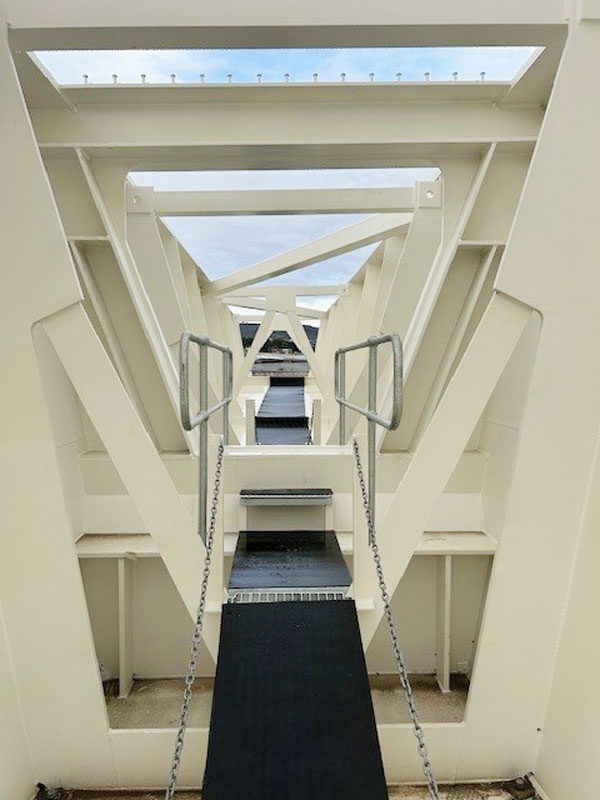Project Requirement
During the construction of the Molonglo River Bridge in Canberra, worker safety became a key concern as crews were required to walk through the internal cavity of large structural steel box girders during installation. The bottom flange of each girder was painted steel, creating an extremely slippery walking surface. A temporary anti-slip solution was needed to provide a safe path for workers and reduce the risk of slips and falls during access and installation.
Application
Reglin Anti-Slip Recycled Rubber Matting was selected for installation along the internal base of the box girders to act as a walking surface. The matting needed to be:
- Lightweight and flexible to allow easy manual installation by workers inside the confined girder space.
- Slip-resistant to provide underfoot grip and minimise the risk of accidents.
- Durable and re-usable suitable for ongoing use throughout various stages of the bridge construction project.
An initial 150 metres of matting was supplied and successfully rolled out and laid by hand along the entire length of the internal base of the first access girder.
Solution
Following the success of the initial installation, the contractor specified Reglin’s recycled rubber matting for use in additional access pathways and temporary work zones across the site. The material’s excellent slip resistance, combined with its ease of handling and durability, made it ideal for temporary anti-slip applications on a variety of construction surfaces.
In total, over 400 metres of recycled anti-slip rubber matting was supplied throughout the project.

Outcome
The Reglin anti-slip Recycled Rubber Matting provided a fast, effective, economical and safe solution to reduce slip hazards within the bridge structure. It allowed workers to move safely through confined steel access spaces, increasing on-site safety without the need for complex installation. The product proved versatile and reliable, leading to continued use across various parts of the construction site.
